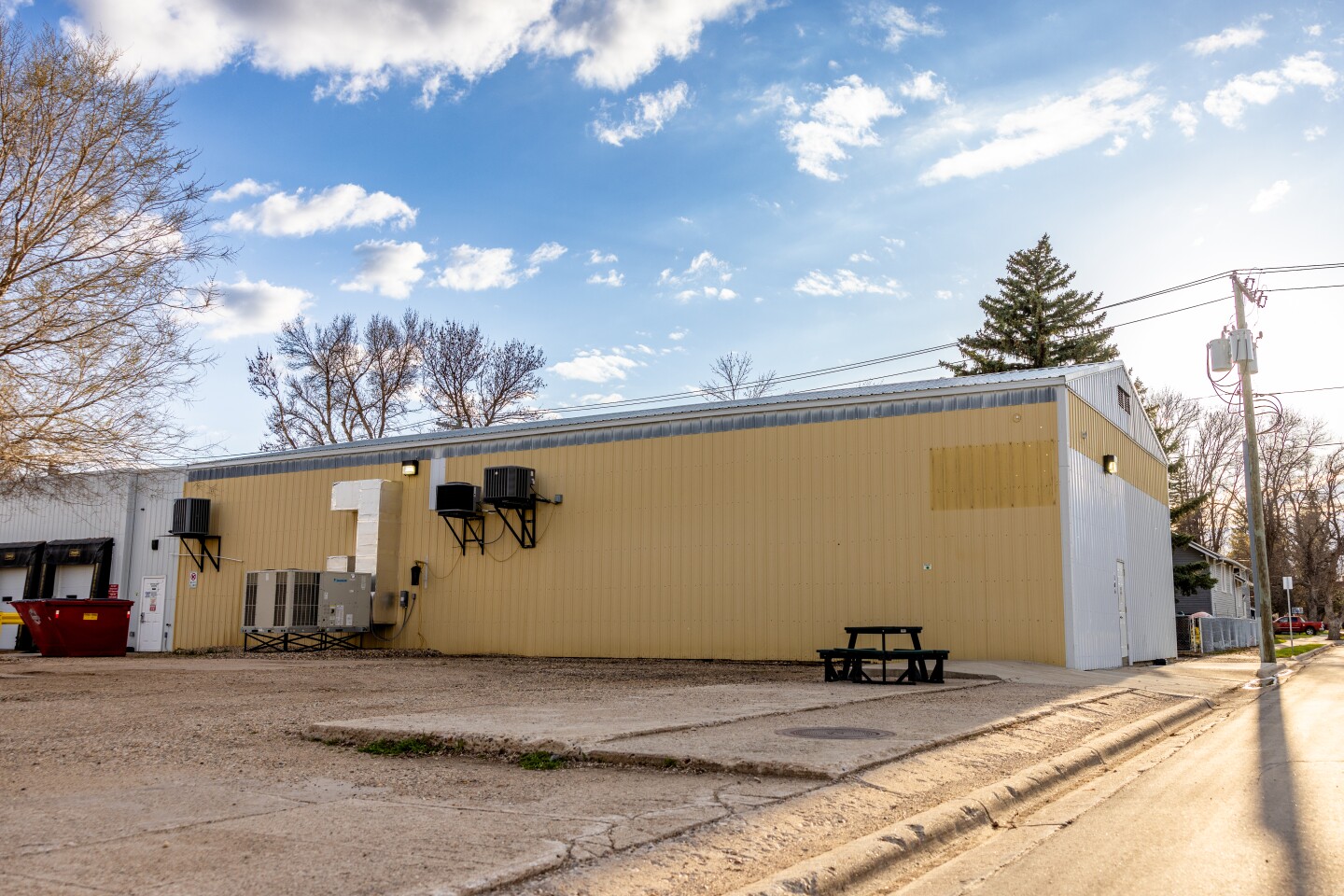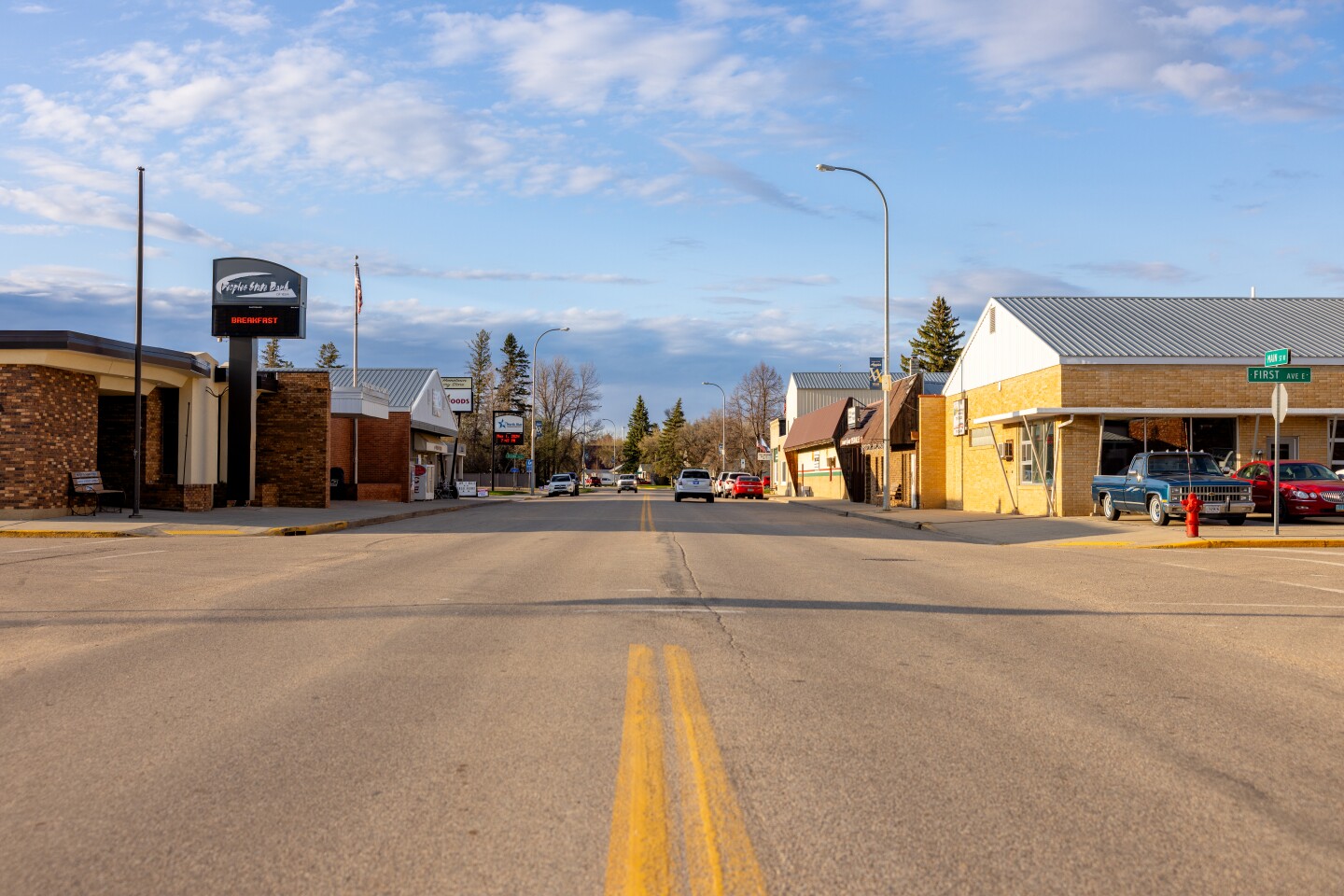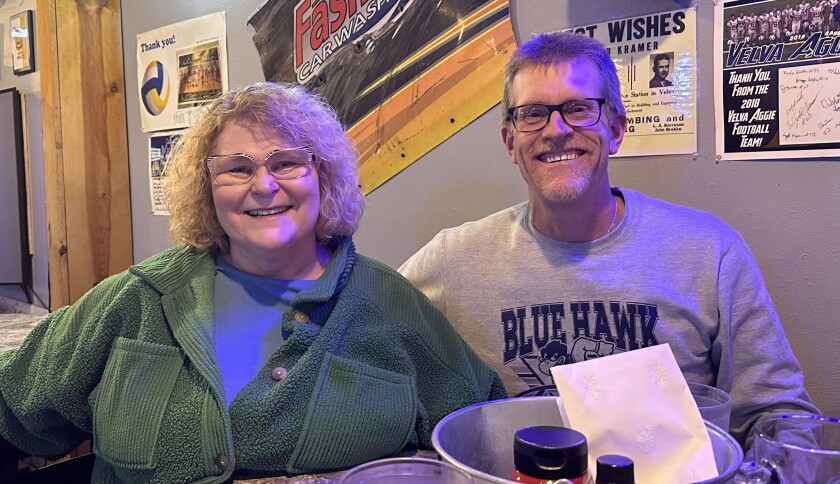VELVA, N.D. — The email pinged Mike Schreiner’s inbox at 7:30 a.m. on a Tuesday last August.
The news wasn’t good: The Hershey Company, which
bought Dot’s Pretzels from founder Dorothy “Dot” Henke
in November 2021, was closing its Velva plant, where the wildly successful pretzel company began.
A Hershey spokesperson
behind the decision: the physical limitations of the building, its reliance on manual vs. automated processes, its remote location and a facility “not conducive to scaling” in size.
The news spread quickly throughout Velva, a city of just over 1,000 about 22 miles southeast of Minot. Surprise and disappointment followed. Especially among city leaders like Schreiner, who knew that 27 people would lose their jobs and the city would lose one of its larger businesses and $7,000 in tax revenue per month.
Dot’s had put Velva on the map. Literally. Founder Henke insisted every Dot’s package include a tiny silhouette of North Dakota, with Velva’s location marked by a star.
Schreiner remembered picking up packages of the pretzels in South Dakota and proudly telling people: “These are made in the town I live in.”
Velva even became a tourist attraction. “We would have people divert out of their normal travel area on their own trips to go out of their way to see Dot’s Pretzels,” he said.
Most residents realized Hershey might not stay there forever, but the closure still felt like a betrayal. Schreiner wondered why the company hadn’t approached city officials earlier so they could have worked together to avoid closure.
“From my understanding of Hershey, they’re very historic and they promote family values,” Schreiner said. “So for them to close this facility where it all started — I took it personally.”
He wasn’t alone.
“I think the town is still mourning,” said Iris Swedlund, a longtime teacher and librarian. “Now the city realizes, ‘Oh my, now we lost a chunk of our Main Street.’ And we don’t have Dot.”
Well, maybe.
Upon learning Hershey would shutter the Dot’s plant, Henke told The Forum she immediately began brainstorming ways to find a new business to fill that facility.
“When I saw the building empty, and it was designed for manufacturing, that’s what I looked for to fill those walls with that excitement again,” she said.

Mason Kramer / The Forum
The Forum has learned one of Dot’s former employees is opening a replacement business in her old property, a yellow steel building and attached warehouse in the heart of town.
‘A valley like velvet’
In the late 1800s, when Soo Line Railroad officials surveyed the fledgling settlement that would become Velva, they stood atop the tallest hill and gazed down at the lush, gem-green valley below.
The story goes that they dubbed it a “valley like velvet,” which most locals believe inspired the city’s charmingly old-fashioned name. (Some think it was actually named after a railroad official’s daughter, but that isn’t nearly so poetic.)
Today, the McHenry County town remains as postcard-ready as ever, with rolling hills, abundant trees and the Mouse River forming a serpentine path through the city.
Here, the proprietor of the Mouse River Oil service station still pumps gas for customers and provides food and shelter for former stray cats.

Mason Kramer / The Forum
The owner of the Finish Line Burgers & Brew greets newcomers by calling them “hon,” and the burgers — trumpeted as “Best Burgers in North Dakota” — live up to the hype.
That down-home vibe helped attract Schreiner to the area when he was promoted to head a new security forces unit at the Minot Air Force Base in 2009. The former Happy Hooligan wanted his kids to grow up in a small community like his hometown of West Fargo.
Schreiner liked everything about the town. Across from the high school, a picturesque bridge crossed the river to a tree-lined park and golf course. In a grocery store that reminded Schreiner of the old Larson’s SuperValu in West Fargo, the aroma of fresh-baked bread filled the air. The town offered a good school, a reasonable commute distance to the Minot Air Force Base and down-to-earth people.

Mason Kramer / The Forum
“That’s what drew me here,” he said. “I wouldn’t say it’s Mayberry, but when you walk down the street and people see you, they say hi.”
Swedlund said she felt the same way after she moved to the town from Mandan as a young teacher. “It’s a gorgeous, gorgeous area,” she said. “It’s kind of like a secret.”
She’d never heard of the town before she was offered a teaching position there. Fifty-five years later, Swedlund is something of an unofficial Velvatologist. Her name even graces the octagon-shaped school/public library she designed.
Over the years, when Swedlund lobbied various school officials for student resources, she found the predominantly Scandinavian community to be highly committed to learning.
“We have an outstanding school district. It’s very well-known,” said Swedlund, who has won numerous Teacher of the Year honors. “It has a very intellectual people. They’re about wanting to have interesting talks, conversations, programs, to learn something — not to gossip about who has got the new red dress. I think that’s why I have stayed here.”
With its proximity to Minot, Velva has some commuters but also offers jobs locally through larger employers like the Souris Valley long-term care center, the ADM plant that makes biodiesel from canola, the local farm implement dealership and the Verendrye Electric Cooperative, which supplies power to the Minot Air Force Base.

Mason Kramer / The Forum
Even so, the closeness to Minot “is a blessing and a curse at the same time,” said Monty Mayer, the community’s superintendent since June 2023. “I’m the first superintendent in Velva who has lived in town for quite some time.”
Mayer made his commitment to the town clear. He and his wife, Kay, a teacher-turned-special-education-paraprofessional, walk to and from school every day, support local businesses and are active with their church.
“I think they’ve embraced us for that reason,” Kay Mayer said.

Tammy Swift / The Forum
Although Monty Mayer doesn’t believe the school district lost any students due to Dot’s closing, he sees the impact on the town.
“In a town this size, anytime you lose a business, it’s going to hurt,” he said.
Dot’s: Before and after Hershey
The story around Dot’s is
Inspired by a Chex party mix Henke sampled at a wedding reception over a decade ago, she experimented in her kitchen to invent the perfect recipe for buttery, garlicky, zesty seasoned pretzels.
She and husband, Randy, started out selling their pretzels at concession stands during football games. They moved to a commercial kitchen while promoting their brand through numerous Pride of Dakota shows and trade shows. They later bought a run-down garage in Velva and refurbished it, opening the Dot’s Pretzels plant in November 2012.
“It had no water, it had nothing,” she
recalled in an earlier Forum article.
“I was down there scrubbing floors and everything else for quite a while.”
The couple then rolled out an ambitious product-sampling strategy. They studied a map of North Dakota, then targeted convenience stores in communities of more than 1,000 people.
Each store was sent sample boxes to dole out as freebies to customers. “We thought if they could sample, there’s a good chance that people would buy,” she said.
She was right.
Once the business gained momentum, she said, the company grew 8% each month. Henke often worked from 6 a.m. to 11 p.m. seven days a week. If someone called in sick, she and Randy would find themselves working the line or filling in wherever needed.
At the Velva plant’s height, Dot’s employed over 100 people, working three shifts, 24 hours a day, to season, package and ship pretzels. The Henkes would also add seasoning plants in Kansas and Arizona.

Ann Arbor Miller / Forum file photo
After Hershey’s acquired the brand, the workforce dwindled. Toward the end, the majority of employees commuted from Minot and only a handful lived in Velva, said “Dan,” a former employee who asked to speak anonymously, as all employees signed non-disclosure agreements as part of the plant closure.
Some of that streamlining might have stemmed from joining Hershey’s large network of plants, where some processes could be handled elsewhere.
But it also was due to the post-COVID worker malaise that affected everywhere else. “They were struggling trying to get people,” he said.
Dan said he could see the plant’s limited size made it difficult to automate their operations. “Financially, I understand why they didn’t want to modernize the setup there,” he said.
While the former employee said they were blindsided by the closure, he added the Hershey officials “were good about it. They didn’t just walk in and say everyone take your stuff and go home.”
The company gave workers two months’ notice and decent severance packages. They also offered to relocate people to out-of-state plants, although he doesn’t know of anyone who took them up on it.
Dan said he was able to quickly find a new job but knows the only predictable thing in the work world is its unpredictability. “I never get myself to the point where I have to depend on a job 100%,” he said. “The bigger the company is, the less chance it’s real secure.”
Even if there’s no longer a Dot’s Pretzels in Velva, the positive example of its leader may have inspired others to take risks and follow their dreams, said Maria Effertz, a Velva native who is director of the North Dakota Department of Commerce Division of Community Services.
“Here’s someone who started in their own kitchen and cooked in the middle of night and worked her tail off. It means maybe this can happen to anybody,” Effertz said. “It kind of gave that little bit of spark to people: If she could do this, maybe I could.”





